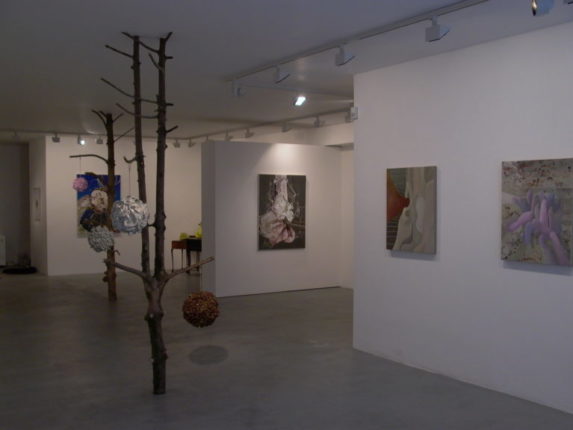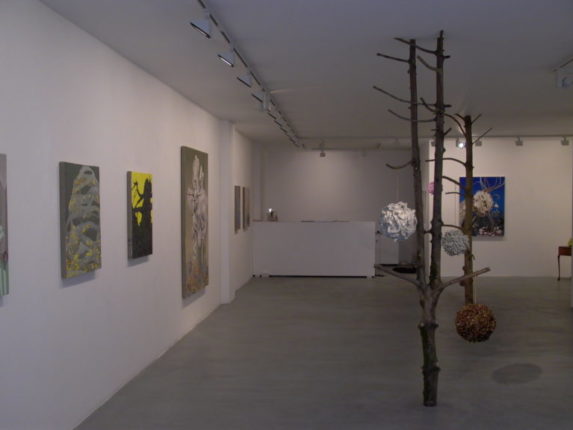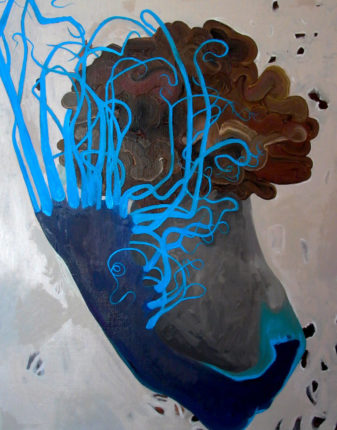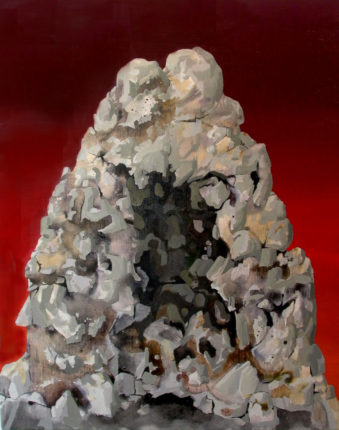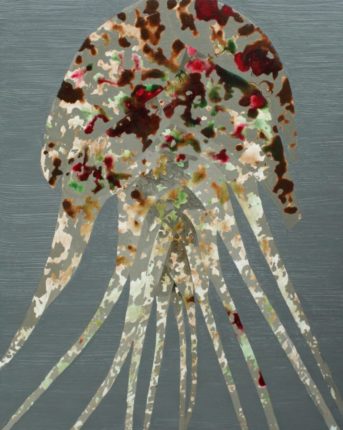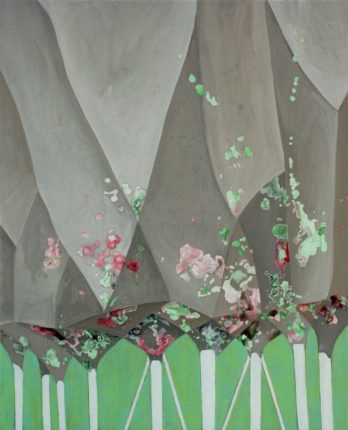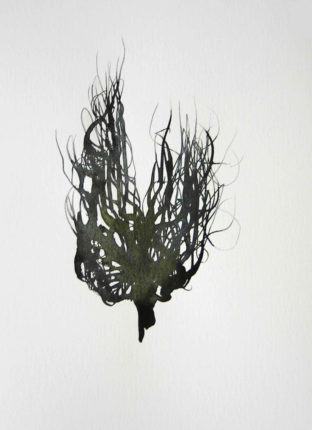Exhibition: 27th March to 2nd May 2009
Looking at the natural world through Fiona Macdonald’s eyes is a unique experience, as she zooms in on an organism or structure, or takes the wider space view. Images are set against horizons of indeterminable scale and almost science fictional hue, while shifts in scale, colour, or a flip of the axis turn one thing into another.
Morphology is the study of the form or shape of an organism, but also suggests the idea of one thing morphing into another, and indeed our sense of perspective is constantly challenged in this dynamic exhibition of new painting and sculpture.
Sculptural pieces range from baroque table-top and hanging ceramics, arranged on and around a surreal medley of antique and junk furniture, to floor-based works, fashioned from tree branches and rococo furniture, that act as sculptural ‘bodies’ for the ceramics. The latter hover between arcane display system and uncanny, animalistic totem. In many works an uncertain presence lurks, suggestive of the ancient animistic spirits that were believed to inhabit all organic life, or of the magical properties of resemblance inherent in early folkloric and medicinal thinking.
The works connect and reconnect through colour and form. An almost Klein blue bleeds into several paintings, serving in one as a barely believable sky, reappearing as the electric veins of a biomorphic structure in another. Macdonald explores forms that seem to be part of the same family, yet their titles reveal very different sources – a morel mushroom – a hanging basket of summer flowers – a white blood cell – a shower puff.
At the heart of the exhibition, and key to understanding Macdonald’s tangents, are a series of modest scale, quietly intense canvases, which remain ambiguous or more formally abstract, with raised fields of monochrome oil situating the animal/fungal/vegetal forms in an indeterminate interior (inside a body, or a cell) or in abstract space. In one piece, interlocking planes of pinkish-greys describe an architectural forest, the soft geometry interrupted by blobs of glittery watercolour that both are, and are not, foliage. Behind MacDonald’s researches into organic form and evolutionary development lies the act and language of painting as the driving force of the work.
